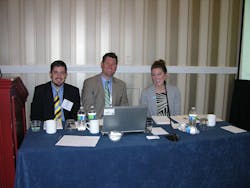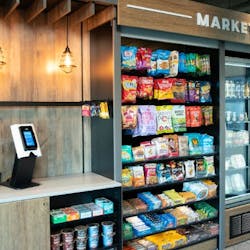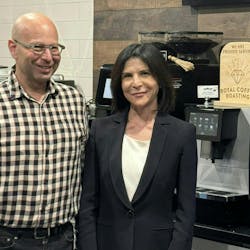One of the experiences I had at the 2015 NAMA CoffeeTea&Water (CTW) event earlier this month was a chance to sit in on the stakeholder meeting between the U.S. Environmental Protection Agency (EPA) and the coffee brewer industry members. It was a fascinating look at the balance and negotiations between two different agendas.
The EPA Energy Star® began in 1992 and its goal is to test and accredit products that are built to use less energy. At its heart, I would call Energy Star a program for consumers. The label helps consumers identify items that will save energy, greenhouse gases and ultimately money in the long term, even if the cost upfront may be higher. However, manufacturers also get something out of the program. Those companies that make a high-quality and well-engineered product receive national recognition – something that can’t be discounted. For one thing, Energy Star ratings help a customer make a purchase decision based on criteria other than price.
A shared voice
The EPA has decided it’s time to look at office coffee equipment and determine testing standards that would allow the commercial coffee brewers to be identified as Energy Star. Attending the meeting shows me that it is much easier said than done.
Ultimately, the current draft of the EPA Requirements Product Specification for Commercial Coffee Brewers divides type II coffee brewers, what we commonly call traditional or batch coffee brewers, into two subcategories: regular and heavy use. To be labeled Energy Star, the “Normalized Ready-To-Brew Idle Energy Rate” must be less than 65 watts per gallon. For heavy use, the “Normalized Heavy-Use Brew Energy Rate” must be less than 280 watts per gallon.
There are also reporting requirements including pre-heat time/energy, production capacity and average tank temperature. These are required to be displayed, but not part of the actual testing to meet Energy Star.
Based on data the EPA has received, their criteria of watts per gallon would qualify only three commercial coffee brewers on the market today as Energy Star. Three! It would be quite a distinction. Manufacturers in the room indicated that once the criteria was set however, they would work to build the brewers to meet those qualifications, so the number is likely to increase in the future.
Multiple topics were brought up in the meeting, including how an energy saving mode that reduces water temperature might actually cause sanitation issues. The discussions hit home for me the importance of giving a voice to concerns and comments when program criteria are being developed. If we can get the right wording and test procedures in place before the final EPA draft, we will be able to proudly display the equipment that is accredited at the highest energy savings level. Energy Star is a well-known national label. And the comment period on this issue is currently open so contact Kirsten Hesla at the EPA to share your concerns or support before November 30, 215.
Single cup brewers aren’t being rated
An interesting side note is that the Energy Star criteria is just for batch brewers. The EPA has not been given sufficient data about commercial single-cup brewers, including bean to cup systems, to determine if an Energy Star program would be achievable (there has been significant energy savings in models already in the market place). At the meeting, the EPA representatives asked manufacturers for their data in order to better understand and identify the Energy Star potential in the office single cup market.





